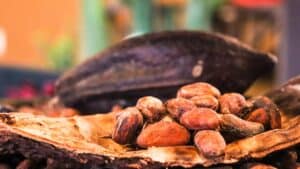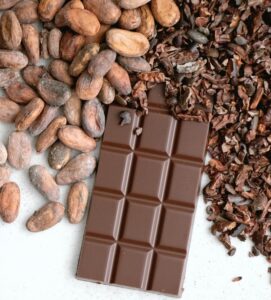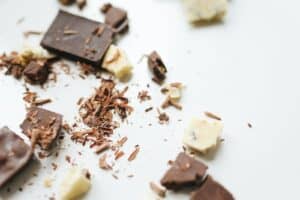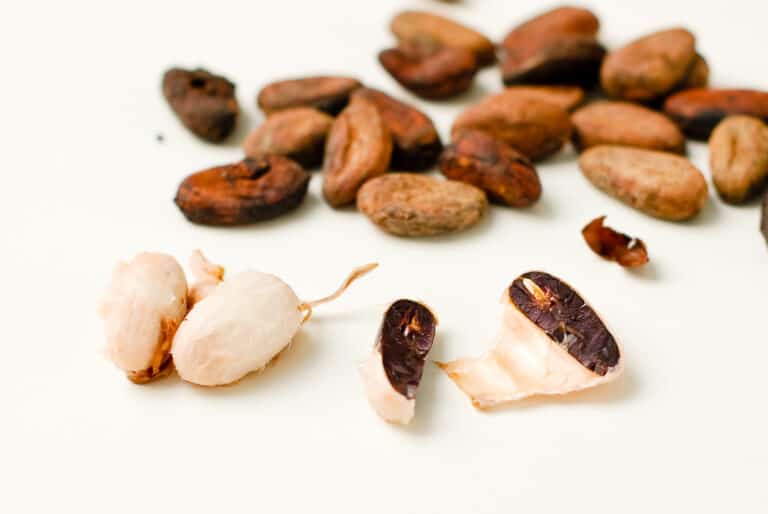Chocolate, an indulgent delight savored by countless people worldwide, undergoes quite an intriguing journey before reaching our taste buds. One of the most crucial stages in this journey is the fermentation process. This article intends to enrich your knowledge of understanding chocolate fermentation and help you value in-depth the intricate process that creates our most cherished culinary delight.
Basics of Fermentation
Fermentation is a metabolic process that uses natural yeasts and bacteria to convert sugar into alcohol, acids, and other biochemically significant compounds. This process is the cornerstone of food production ranging from bread to the beverages we consume. Among them, chocolate fermentation stands out as a fascinating process responsible for the characteristic flavor profile we love so dearly.
Understanding The Origins: Cocoa Bean

Cacao trees, also known as Theobroma cacao, which literally translates to “food of the gods,” grow well in tropical climates. The cacao tree bears fruit called cacao pods. Each cacao pod contains around 30 to 40 cacao beans enveloped within a juicy white pulp. It’s from these raw cocoa beans that our beloved chocolate is produced.
Harvesting and Fermentation Process of Cocoa Beans
The cacao pods are hand-harvested and cracked open using machetes, revealing raw cacao beans nestled within the pulpy interior. The harvested cocoa beans, along with the pulp, are then placed into shallow containers or even banana leaves for the fermentation process to commence. It is in this crucial phase that the unique chocolate flavor starts to develop profoundly.
The Role of Yeast and Bacteria
Fermentation is a multi-step process driven by various microorganisms, primarily yeasts and bacteria. The yeasts, being saccharolytic organisms, convert the sugar in the cocoa pulp into alcohol. The alcohol produced is then converted into acetic acid by the acetic acid bacteria, creating an environment conducive to the death of the bean’s germ which initiates the various chemical reactions for flavor formation. Lactic acid bacteria also play a significant role in the fermentation by reducing sugars and producing lactic acid. These acid bacteria, along with yeast, facilitate the spontaneous fermentation process usually occurring in cocoa fermentation.
Fermentation Stages

The cocoa fermentation process is a microbial succession that is typically divided into three main stages. The first stage is marked by yeasts dominating the scene and starting the fermentation process by breaking down the pulp’s sugar into alcohol. This process of fermentation typically lasts for about two days.
In the second stage, lactic acid bacteria in addition to acetic acid bacteria metabolize the ethyl alcohol into acidic compounds notably causing the cocoa beans heat up to high temperatures.
In the last stage, the cocoa beans continue to be heated, drying out and turning into the brown color we commonly associate with chocolate. This heat generation initiates the complex biochemical mechanisms involved in flavor formation.
Fermentation Process Impact on Chocolate Flavor
Fermentation does all the magic when it comes to developing chocolate’s complex flavor profile. Beans fermented correctly give birth to intricate blends of fruity, nutty, and woody flavors that set high-quality chocolate apart. Contrarily, unfermented cocoa beans deliver bland and astringent flavors that are far from pleasant.
During fermentation, enzymes break down proteins in the beans into smaller compounds called amino acids. These compounds, alongside reducing sugars in the beans, undergo Maillard reactions to produce a myriad of flavorful and aromatic compounds. Moreover, the changing conditions during fermentation, such as temperature and moisture variations, contribute to the diversity of the chocolate flavor.
Contribution of Fermentation: Enhancing Nutritional Value

Beyond flavor formation, fermentation also plays a vital role in increasing the nutritional value of chocolate. Fermented cocoa beans are notably rich in antioxidants, magnesium, and iron, lending the dark chocolate its well-lauded status as a superfood. The process also aids in reducing phytic acid, thus improving the nutritional absorption of the finished chocolate.
Current Trends and Future Possibilities in Chocolate Fermentation
To further our understanding of chocolate fermentation, scientists and chocolate makers are working in tandem to pinpoint factors that influence the process. Technological advances have enabled more controlled fermentation methods, with chocolate manufacturers increasingly leaning on these approaches to ensure desirable flavor, consistency, and quality in their products. Recent breakthroughs relate to creating starter cultures of specific yeast and bacteria strains, thereby dictating the resultant chocolate flavor more accurately.
From Fermented Beans to Various Products
Upon completion of the fermentation process, begins the transformation of fermented beans into a wide array of chocolate products. The fermented cocoa beans are dried, toasted, and eventually ground to produce a homogeneous paste identified as cocoa mass or cocoa liquor. This intensely flavored cocoa mass is the starting point for all chocolate derivatives, each carrying distinct cacao flavors.
Decoding Cocoa Solids: Cocoa Powder and Cocoa Butter
Once obtained, the cocoa liquor undergoes mechanical pressing, separating it into two main components: cocoa solids and cocoa butter.
Cocoa solids, also known as cocoa powder, give the bitter and potent chocolate flavor due to their high concentration of the alkaloid theobromine.
On the other hand, cocoa butter, extracted from cacao beans during the chocolate-making process, is responsible for the smooth and creamy texture of chocolate. Its low melting point, just below the average human body temperature, gives finished chocolate its melt-in-mouth property.
The incredible mixture of cocoa powder and cocoa butter, when complemented by sugar, renders the unforgettable and cherished experience of chocolate.
The Making of Different Types of Chocolate: Dark and Milk Chocolate

The proportion of cocoa solids and cocoa butter in the cocoa mass, plus the addition of sugar and other ingredients, determines the type of chocolate.
Dark chocolate is predominantly made of cocoa mass, sugar, and a hint of vanilla. It gets its distinctive taste from the high content of cocoa solids, which also contributes to its health benefits.
Milk chocolate, on the contrary, has a lower content of cocoa solids and cocoa butter. Apart from sugar, it also contains milk or milk powder, outlining its creamier texture and sweeter taste in comparison to dark chocolate.
The Marvelous Journey of Cocoa Nibs
It’s also essential to mention cocoa nibs – a crunchy, flavorful, and healthy by-product of the chocolate-making process. These are fragments of crushed cacao beans, post-fermentation and roasting, and they carry every aspect of cacao flavor.
Cocoa nibs can be consumed directly or used in recipes to add a chocolatey crunch. On the other hand, cocoa nibs can also be subjected to grinding, resulting in a finely ground paste: the chocolate liquor. Far from the typical liquor we imagine, chocolate liquor is a non-alcoholic, thick paste justly named for its liquid, pourable state when warm.
Understanding Chocolate Fermentation – Final Thoughts
From the cacao tree to the chocolate bar you relish, the process is a testament to nature’s wonder, human ingenuity, and complex food science. It’s not just about cocoa and sugar – it’s about understanding chocolate fermentation, the inherent process of transforming humble cocoa beans into the world’s favorite dessert. So, the next time you bite into a piece of chocolate, savor it a bit more knowing the fascinating journey those cocoa beans have undertaken.
